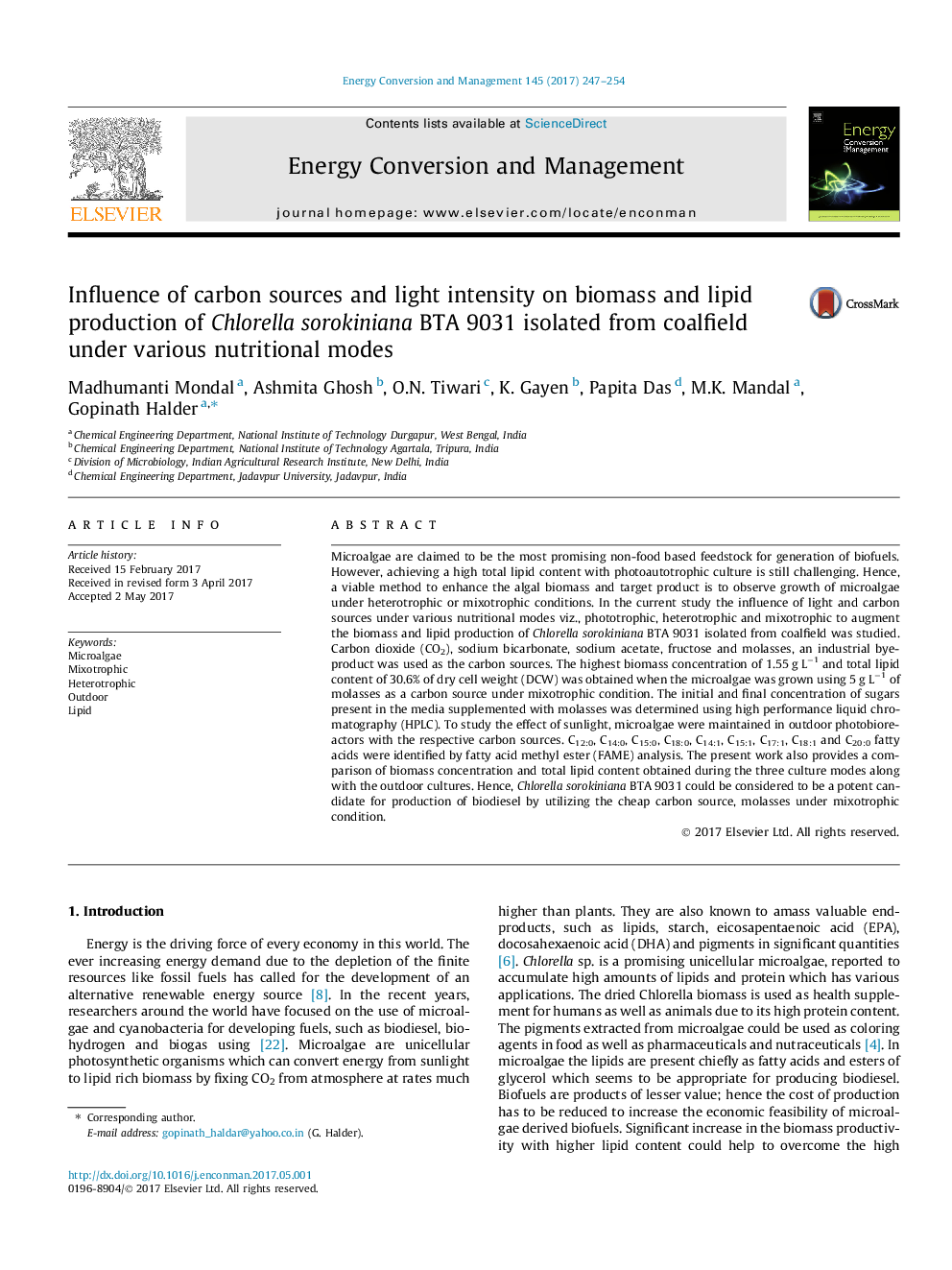| Article ID | Journal | Published Year | Pages | File Type |
|---|---|---|---|---|
| 5012740 | Energy Conversion and Management | 2017 | 8 Pages |
Abstract
Microalgae are claimed to be the most promising non-food based feedstock for generation of biofuels. However, achieving a high total lipid content with photoautotrophic culture is still challenging. Hence, a viable method to enhance the algal biomass and target product is to observe growth of microalgae under heterotrophic or mixotrophic conditions. In the current study the influence of light and carbon sources under various nutritional modes viz., phototrophic, heterotrophic and mixotrophic to augment the biomass and lipid production of Chlorella sorokiniana BTA 9031 isolated from coalfield was studied. Carbon dioxide (CO2), sodium bicarbonate, sodium acetate, fructose and molasses, an industrial bye-product was used as the carbon sources. The highest biomass concentration of 1.55 g Lâ1 and total lipid content of 30.6% of dry cell weight (DCW) was obtained when the microalgae was grown using 5 g Lâ1 of molasses as a carbon source under mixotrophic condition. The initial and final concentration of sugars present in the media supplemented with molasses was determined using high performance liquid chromatography (HPLC). To study the effect of sunlight, microalgae were maintained in outdoor photobioreactors with the respective carbon sources. C12:0, C14:0, C15:0, C18:0, C14:1, C15:1, C17:1, C18:1 and C20:0 fatty acids were identified by fatty acid methyl ester (FAME) analysis. The present work also provides a comparison of biomass concentration and total lipid content obtained during the three culture modes along with the outdoor cultures. Hence, Chlorella sorokiniana BTA 9031 could be considered to be a potent candidate for production of biodiesel by utilizing the cheap carbon source, molasses under mixotrophic condition.
Related Topics
Physical Sciences and Engineering
Energy
Energy (General)
Authors
Madhumanti Mondal, Ashmita Ghosh, O.N. Tiwari, K. Gayen, Papita Das, M.K. Mandal, Gopinath Halder,
